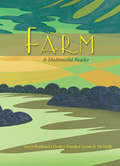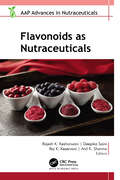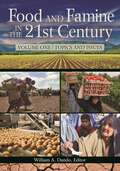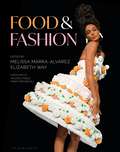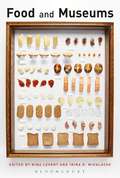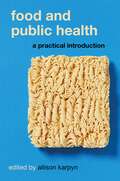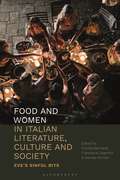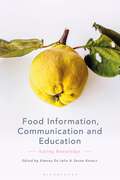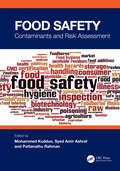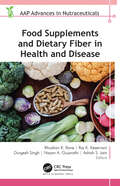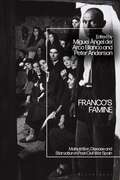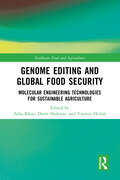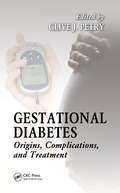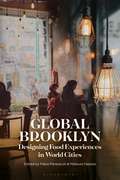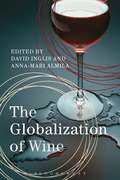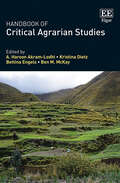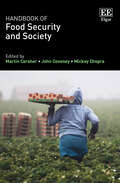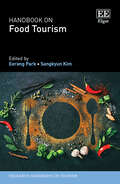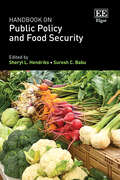- Table View
- List View
Farm: A Multimodal Reader
In Farm, Joyce Kinkead, Evelyn Funda, and Lynne S. McNeill explore the culture of agriculture through a diverse and multicultural collection of fiction, poetry, essays, art, recipes, and folklore. This reader views farming through a variety of lenses, asking students to consider what farms, farming, and farmers mean, and have meant, to culture in the United States. In the text, readers are guided through the Jeffersonian idealism of the yeoman farmer (“cultivators of the earth are the chosen people of God”) to literature of the nineteenth and twentieth centuries (Thoreau’s “The Bean-Field,” Cather’s prairie trilogy, Steinbeck’s The Grapes of Wrath, and Carpenter’s Farm City). Contributors provide historical context for the literary texts, such as discussion of sharecropping vs. plantation systems, the rise of agribusiness and chemical farming, and Teddy Roosevelt’s Country Life Commission. Written, visual, and oral texts ask readers to consider the farm in art (Grant Wood), ecology (Rachel Carson’s Silent Spring), children’s and young adult literature (classic children’s books, YA novels, nonfiction, and poetry), advertising (from early boosterism to Chipotle videos), print culture (farmers’ market and victory garden posters from both world wars), folklore (food culture, vintners, and veterinarian practices), popular culture (Farm Aid concerts), and much more. Each reading is supported by activities, exercises, projects, and visual rhetorical elements that further connect students to agriculture and the essential work of farmers.
Flavonoids as Nutraceuticals (AAP Advances in Nutraceuticals)
Flavonoids are well-known plant metabolites that have extraordinary properties that can be used for treating health issues. The pharmaceutical importance of flavonoids is due to their anti-depressant, anti-viral, anti-inflammatory, and antioxidant capacities. They are also of great importance when it comes to neuroprotection, cardiovascular disorders, and many types of cancer. Flavonoids are also easily available and produce less harmful side effects than some conventional therapeutics. This new volume examines the growing use of flavonoids for prevention and treatment of diseases and discusses their beneficial mechanisms. Chapters in the volume address diverse uses as anti-aging tools, as anti-inflammatory agents, for treating pregnancy-induced disorders, as a promising tool to combat infection of Covid-19, etc. The book explores their specific therapeutic antiviral potentials, the gene expression by flavonoids, and the role of flavonoids in agriculture.
Food and Famine in the 21st Century [2 volumes]: [2 volumes]
This comprehensive two-volume encyclopedia examines specific famines throughout history and contains entries on key topics related to food production, security and policies, and famine, giving readers an in-depth look at food crises and their causes, responses to them, and outcomes.Famines have claimed more lives across human history than all the wars ever fought.This two-volume set represents the most comprehensive study of food and famine currently available, providing the broadest analysis of hunger and famine causes as well as a detailed examination of the ramifications of cultural and natural hazards upon famine.Volume one focuses upon 50 topics and issues relating to the creation of hunger and famines in the world from 4000 BCE to 2100, including an overview of how agriculture has evolved from primitive hunting and gathering that supported limited numbers of people to a worldwide system that now feeds over seven billion people. Volume two, entitled Classic Famines, begins with famines of the past, from 4000 BCE to 2100 CE, includes ten classic famine case studies, and concludes with predictions of famines we could see in the 21st century and beyond.
Food and Fashion
Food and Fashion accompanies a major exhibition at The Museum at FIT, New York's only museum dedicated solely to the art of fashion. This beautifully illustrated book featuring over 100 enticing full-color images, from fashion runways to fine art photography and period cookbooks, examines the influence of food culture through the lens of fashion over the last 250 years. It focuses on the ways that food culture has expressed itself in fashion and how these connect to broader socio-cultural change, examining how vital both have been in expressing cultural movements across centuries, and specifically exploring the role food plays in fashionable expression.With its superb selection of images, and thought-provoking and engaging discussion, Food and Fashion appeals to fashion enthusiasts who have an overlapping interest in food and food studies, including scholars and students, those who enjoy the fashion of food, and all who appreciate the visual culture of food, fashion, and art.
Food and Museums
Museums of all kinds – art, history, culture, science centers and heritage sites – are actively engaging with food through exhibitions, collections, and stories about food production, consumption, history, taste, and aesthetics. Food also plays a central role in their food courts, restaurants, cafes, gardens, and gift shops. Food and Museums is the first book to explore the diverse, complex relationship between museums and food. This edited collection features theoretical analysis from cultural historians, anthropologists, neuroscientists, and food studies scholars; interviews with museum professionals, artists and chefs; and critical case studies from a wide range of cultural institutions and museums to establish an interdisciplinary framework for the analysis of the role of food in museums. Exploring the richness and complexity of sensory, cultural, social, and political significance of food today as well as in the past, the book demonstrates how food is changing the current museological landscape.A fascinating look at contemporary museums through the lens of food, this is an essential read for students and researchers in museum studies, food studies, cultural studies, and sensory studies as well as museum and food professionals.
Food and Public Health: A Practical Introduction
A new introduction to public health's most elemental topic Food is baked in to most things that public health is and does. But for a field charged with carrying torches as divergent as anti-hunger and anti-obesity, it's unlikely, even impossible, to shape a unified approach to complex concepts like food environment, food access, or even nutrition. Food and Public Health offers a contextualized, accessible introduction to understanding the foundations (and contradictions) at the intersection of these two topics. It distills the historical, political, sociological, and scientific factors influencing what we eat and where our food comes from, then offers actionable insights for future nutritionists, social workers, dietitians, and researchers in public health. Guiding the reader through more than a century of food-focused regulation, policy, and education, Food and Public Health is an essential introduction to: · food production and availability on a global and neighborhood scale · dietary guidelines, agricultural subsidies, rationing, and other attempts by governments to shape their citizens' diets · best practices in health promotion and chronic disease prevention · food insecurity and its paradoxical role as driver of both hunger and obesity Enriched with real-world examples and case studies, Food and Public Health offers a crucial link between kitchen tables and populations for the classroom.
Food and Women in Italian Literature, Culture and Society: Eve's Sinful Bite
This book explores how women's relationship with food has been represented in Italian literature, cinema, scientific writings and other forms of cultural expression from the 19th century to the present.Italian women have often been portrayed cooking and serving meals to others, while denying themselves the pleasure of the table. The collection presents a comprehensive understanding of the symbolic meanings associated with food and of the way these intersect with Italian women's socio-cultural history and the feminist movement.From case studies on Sophia Loren and Elena Ferrante, to analyses of cookbooks by Italian chefs, each chapter examines the unique contribution Italian culture has made to perceiving and portraying women in a specific relation to food, addressing issues of gender, identity and politics of the body.
Food Information, Communication and Education: Eating Knowledge
Food Information, Communication and Education analyses the role of different media in producing and transforming knowledge about food. 'Eating knowledge', or knowledge about food and food practice, is a central theme of cooking classes, the daily press, school textbooks, social media, popular magazines and other media. In addition, a wide variety of actors have taken on the responsibility of informing and educating the public about food, including food producers, advertising agencies, celebrity chefs, teachers, food bloggers and government institutions. Featuring a range of European case studies, this interdisciplinary collection advances our understanding of the processes of mediatization, circulation and reception of knowledge relating to food within specific social environments. Topics covered include: popularized knowledge about food carried over from past to present; the construction of trustworthy knowledge in today's food risk society; critical assessment of nutrition education initiatives for children; and political and ideological implications of food information policy and practice.
Food Safety: Contaminants and Risk Assessment
Food Safety: Contaminants and Risk Assessment is a state-of-art reference on food safety, which is the biggest challenge in the food supply chains worldwide. Despite advancements in hygiene, food treatment, and food processing, foodborne pathogens or food contaminants still represent a significant threat to human health. This book presents comprehensive information about the major food contaminants across food types. The text provides facts about setting up food safety initiatives and safety rules, foodborne pathogen detection, production and processing compliance issues, and safety education.Key Features Examines a diverse range of contaminants across food types Describes various food allergens and allergies Discusses contamination in drinking water and bottled water Reviews the international regulations for management of food hazards Throws light on the overall impact of food safety of global food supply chains This book is meant for postgraduate students, researchers, and food industry professionals.
Food Supplements and Dietary Fiber in Health and Disease (AAP Advances in Nutraceuticals)
Here is an in-depth and informative introduction to dietary fibers and food supplements, elaborating on their uses and benefits in the prevention and treatment of such health issues and diseases as diabetes, obesity, coronary heart disease, colorectal and other types of cancer, and gut health. The book also discusses the formulation-based approaches for the delivery of food supplements and dietary fibers as well as the use of botanicals in dietary supplements and fibers. The chapter on regulatory guidance of food supplement and dietary fiber discusses the current statutes and regulations addressing dietary ingredients, manufacturing standards, safety, labelling, and claims. The book explains how dietary fibers and food supplements work to maintain gut health, addressing such issues as constipation, loose stools, inflammatory bowel diseases, hiatal hernias, gastroesophageal reflux disease, Barrett’s esophagus, diverticular disease, hemorrhoids, peptic ulcers, gastritis, celiac disease, gallstones, and colon cancer.
Franco's Famine: Malnutrition, Disease and Starvation in Post-Civil War Spain
At least 200,000 people died from hunger or malnutrition-related diseases in Spain during the 1940s. This book provides a political explanation for the famine and brings together a broad range of academics based in Spain, the United Kingdom, the United States and Australia to achieve this. Topics include the political causes of the famine, the physical and social consequences, the ways Spaniards tried to survive, the regime's reluctance to accept international relief, the politics of cooking at a time of famine, and the memory of the famine. The volume challenges the silence and misrepresentation that still surround the famine. It reveals the reality of how people perished in Spain because the Francoist authorities instituted a policy of food self-sufficiency (or autarky): a system of price regulation which placed restrictions on transport as well as food sales. The contributors trace the massive decline in food production which followed, the hoarding which took place on an enormous scale and the vast and deeply iniquitous black market that subsequently flourished at a time when salaries plunged to 50% below their levels in 1936: all contributing factors in the large-scale atrocity explored fully here for the first time.
Fries (Large Print)
At the centre of the page is a picture of a packet of fries. There is a locator dot shown, which will be at the top left of the page when the image is the correct way up. At the top of the picture are the fries. They are sticking up from the cardboard packet below. Can you count how many there are? The packet has a diamond shaped decoration on it.
Fries (UEB Contracted)
At the centre of the page is a picture of a packet of fries. There is a locator dot shown, which will be at the top left of the page when the image is the correct way up. At the top of the picture are the fries. They are sticking up from the cardboard packet below. Can you count how many there are? The packet has a diamond shaped decoration on it.
Fries (UEB Uncontracted)
At the centre of the page is a picture of a packet of fries. There is a locator dot shown, which will be at the top left of the page when the image is the correct way up. At the top of the picture are the fries. They are sticking up from the cardboard packet below. Can you count how many there are? The packet has a diamond shaped decoration on it.
Genome Editing and Global Food Security: Molecular Engineering Technologies for Sustainable Agriculture (Earthscan Food and Agriculture)
With the rapid increase in the global population and changing climatic impacts on agriculture, this book demonstrates how genome editing will be an indispensable technique to overcome ongoing and prospective agricultural challenges. This book examines the role of genome editing in improving crop yields and contributing to global food security. It summarizes a range of genome editing techniques and discusses the roles they can play in producing a new generation of high-yielding, climate-ready crops. This includes site-specific nucleases, precision genome engineering, clustered regularly interspaced short palindromic repeats, and bioinformatics. It showcases how these gene editing techniques can tailor plants to not only increase yield-related traits but to also make them better suited to their environment and to be resistant to pests and extreme climatic events, such as droughts. The book also examines genome editing regulations and policies, the commercialization of genome-edited crops, and biosafety and biosecurity concerns. Overall, this book reveals and showcases how genome editing can improve crop resilience and production to address current and future agricultural challenges and alleviation of global food security concerns. This book will be of great interest to students and scholars of agricultural science, crop and plant science, genome editing, sustainable agriculture, biotechnology, and food security.
Gestational Diabetes: Origins, Complications, and Treatment
Given the rapid increase in the worldwide incidence of gestational diabetes, the need for defining the risks and effects associated with raised glucose concentrations in pregnancy is great. Recent large studies are helping to define the risks, as well as identify the benefits of reducing glucose intolerance. Written by an esteemed list of internati
Global Brooklyn: Designing Food Experiences in World Cities
What do the fashionable food hot spots of Cape Town, Mumbai, Copenhagen, Rio de Janeiro, and Tel Aviv have in common? Despite all their differences, consumers in each major city are drawn to a similar atmosphere: rough wooden tables in postindustrial interiors lit by edison bulbs. There, they enjoy single-origin coffee, kombucha, and artisanal bread. This is 'Global Brooklyn,' a new transnational aesthetic regime of urban consumption. It may look shabby and improvised, but it is all carefully designed. It may romance the analog, but is made to be Instagrammed. It often references the New York borough, but is shaped by many networked locations where consumers participate in the global circulation of styles, flavors, practices, and values. This book follows this phenomenon across different world cities, arguing for a stronger appreciation of design and materialities in understanding food cultures. Attentive to local contexts, struggles, and identities, contributors explore the global mobility of aesthetic, ethical, and entrepreneurial projects, and how they materialize in everyday practices on the ground. They describe new connections among eating, drinking, design, and communication in order to give a clearer sense of the contemporary transformations of food cultures around the world.
The Globalization of Wine
The Globalization of Wine is a one-stop guide to understanding wine across the world today. Examining a broad range of developments in the wine world, it considers the social, cultural, economic, political and geographical dimensions of wine globalization. It investigates how large-scale changes in production, distribution and consumption are transforming the wine that we drink. Comprehensive background discussion is complemented by vivid case study chapters from a variety of international contributors. Many different countries and regions are covered, including China, the USA and Hong Kong, as are key themes, debates and controversies in contemporary wine worlds. Innovative, up-to-date and interdisciplinary, The Globalization of Wine illustrates the diversity and complexity of wine globalization processes across the planet, both in the past and at the present time. It is essential reading for academics and students in food and drink studies, sociology, anthropology, globalization studies, geography and cultural studies. It also provides a jargon-free resource for wine professionals and connoisseurs.
Grapes (Large Print)
This is an image of a bunch of purple grapes shown life-sized in the middle of the page. There is a locator dot shown, which will be at the top left of the page when the image is the correct way up. At the top of the page, you can find the main stalk where the bunch of grapes has been cut from the vine. Further down the page, this branches off into the smaller stalks that the oval-shaped fruit hang from.
Grapes (UEB Contracted)
This is an image of a bunch of purple grapes shown life-sized in the middle of the page. There is a locator dot shown, which will be at the top left of the page when the image is the correct way up. At the top of the page, you can find the main stalk where the bunch of grapes has been cut from the vine. Further down the page, this branches off into the smaller stalks that the oval-shaped fruit hang from.
Grapes (UEB Uncontracted)
This is an image of a bunch of purple grapes shown life-sized in the middle of the page. There is a locator dot shown, which will be at the top left of the page when the image is the correct way up. At the top of the page, you can find the main stalk where the bunch of grapes has been cut from the vine. Further down the page, this branches off into the smaller stalks that the oval-shaped fruit hang from.
Handbook of Critical Agrarian Studies
Exploring the emerging and vibrant field of critical agrarian studies, this comprehensive Handbook offers interdisciplinary insights from both leading scholars and activists to understand agrarian life, livelihoods, formations and processes of change. It highlights the development of the field, which is characterized by theoretical and methodological pluralism and innovation. The Handbook presents critical analyses of, and examines controversies about, historical and contemporary social structures and processes in agrarian and rural settings from a wide range of perspectives. Chapters explore the origins of critical agrarian studies, the concepts underpinning the diverse theoretical approaches to the field, and the strengths and weaknesses of different methodologies used within the field. Finally, it illuminates debates around the topic and trajectories for future research and development. This will be a vital resource for graduate students, scholars and activists interested in critical agrarian studies. The analytical and empirical insights will also be helpful to students of environmental and development studies as well as agricultural and development economics, human geography and socio-cultural anthropology.
Handbook of Food Security and Society
Events such as the COVID-19 pandemic and the war in Ukraine have drawn the subject of food security firmly into the public eye. This timely Handbook examines and responds to this pertinent topic, offering calculated solutions to food insecurity. Exploring an international range of perspectives surrounding food security, the Handbook of Food Security and Society illustrates clear links between food and broader social welfare policy and economic determinants. Chapters describe histories of food security, its measurement and question the role of movements, such as charitable organisations, that have been involved in the food security debate. They resolutely locate food welfare as a fundamental human right. This comprehensive Handbook will be essential for politics, economics and social policy academics and researchers seeking to gain a clearer understanding of food security history and policy. It will additionally be beneficial to specific practitioners, such as nutritionists and policy makers, working to understand key connections between welfare strategies, wellbeing and food security.
Handbook on Food Tourism (Research Handbooks in Tourism series)
This Handbook on Food Tourism provides an overview of the past, present, and future of research traditions, perspectives, and concerns about the food tourism phenomenon. Taking a multidisciplinary approach, it contributes to the historical and anthropological understanding of the nexus between food, society, and tourism that underpins the divergent business and marketing efforts in tourism today.Expert contributors from across the globe not only explore the theoretical and conceptual foundations of food tourism research, but also address the significance of the multistakeholder nature of tourism in the context of food tourism development. Chapters present empirical research using quantitative and qualitative methods, conceptual papers and critical literature reviews employing archival research methods and informetric mapping, and analysis of secondary data from social, political, and environmental sources. Rich with information and data about diverse socio-cultural and environmental issues, this Handbook consolidates knowledge on the studies of food tourism from around the world and provides a vision for future research.Covering the breadth of food tourism research, this Handbook will be a fundamental reference work for researchers, academics, and students in tourism management, human geography, social and cultural geography, and business and management. It will similarly appeal to professionals, local authorities, and local food and tourism industries and businesses.
Handbook on Public Policy and Food Security
The Handbook on Public Policy and Food Security provides multi-disciplinary insights into food security analysis across the Sustainable Development Goals (SDGs). As food security is an essential outcome and a part of sustainable and healthy food systems, this Handbook addresses the urgent need to provide a comprehensive overview of the field’s current developments.Paired chapters focuses on a specific SDG in turn, presenting an overview and using qualitative and quantitative methodological approaches to assess the impact of food security on the attainment of the specific goal, and the evaluation of the impact of the goal on food security. This Handbook brings together experts in the field who advocate for a food systems approach, highlighting how various components of a food system function together to achieve the goal of food security for all. The cross-policy themes covered extend beyond the SDGs, proving relevant for public policy and food security in the foreseeable future. This erudite Handbook will be highly informative for academics, researchers and students in agricultural economics, development studies, human geography, human rights and comparative social policy. It will also be beneficial for professionals working in public policy, NGOs and multilateral organisations who are interested in understanding food security and nutrition monitoring.
